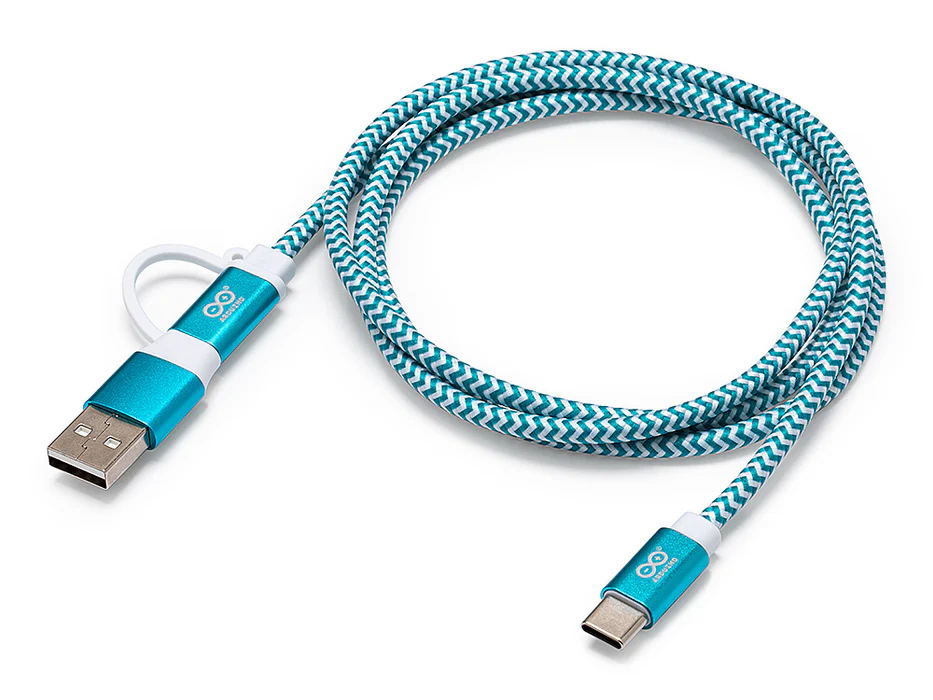
Overview
Now you can connect your Arduino boards with the official Arduino USB Cable. Through a USB-C® to USB-C with a USB-A adapter connection, this data USB cable can easily connect your Arduino boards with your chosen programming device.
The Arduino USB Cable has a nylon braided jacket in white and teal, so that you can sport the Arduino colors even when you are hooking up your electronics. The connectors have an aluminum shell that protects your cable from harm at the same time as looking stylish.
- 100 cm
- Aluminium shell with logo
- Nylon braided jacket white and teal
Conformities
Resources for Safety and Products
Manufacturer Information
The production information includes the address and related details of the product manufacturer.
Arduino S.r.l.
Via Andrea Appiani, 25
Monza, MB, IT, 20900
https://www.arduino.cc/
Responsible Person in the EU
An EU-based economic operator who ensures the product's compliance with the required regulations.
Arduino S.r.l.
Via Andrea Appiani, 25
Monza, MB, IT, 20900
Phone: +39 0113157477
Email: support@arduino.cc





